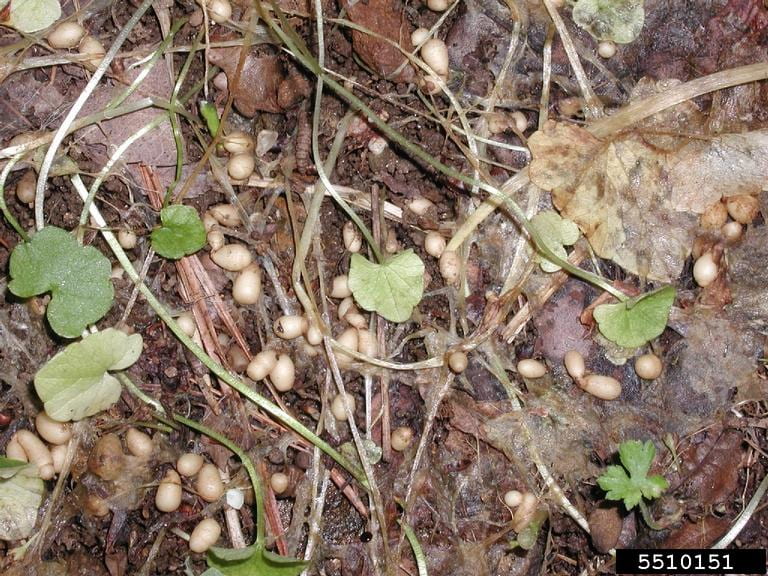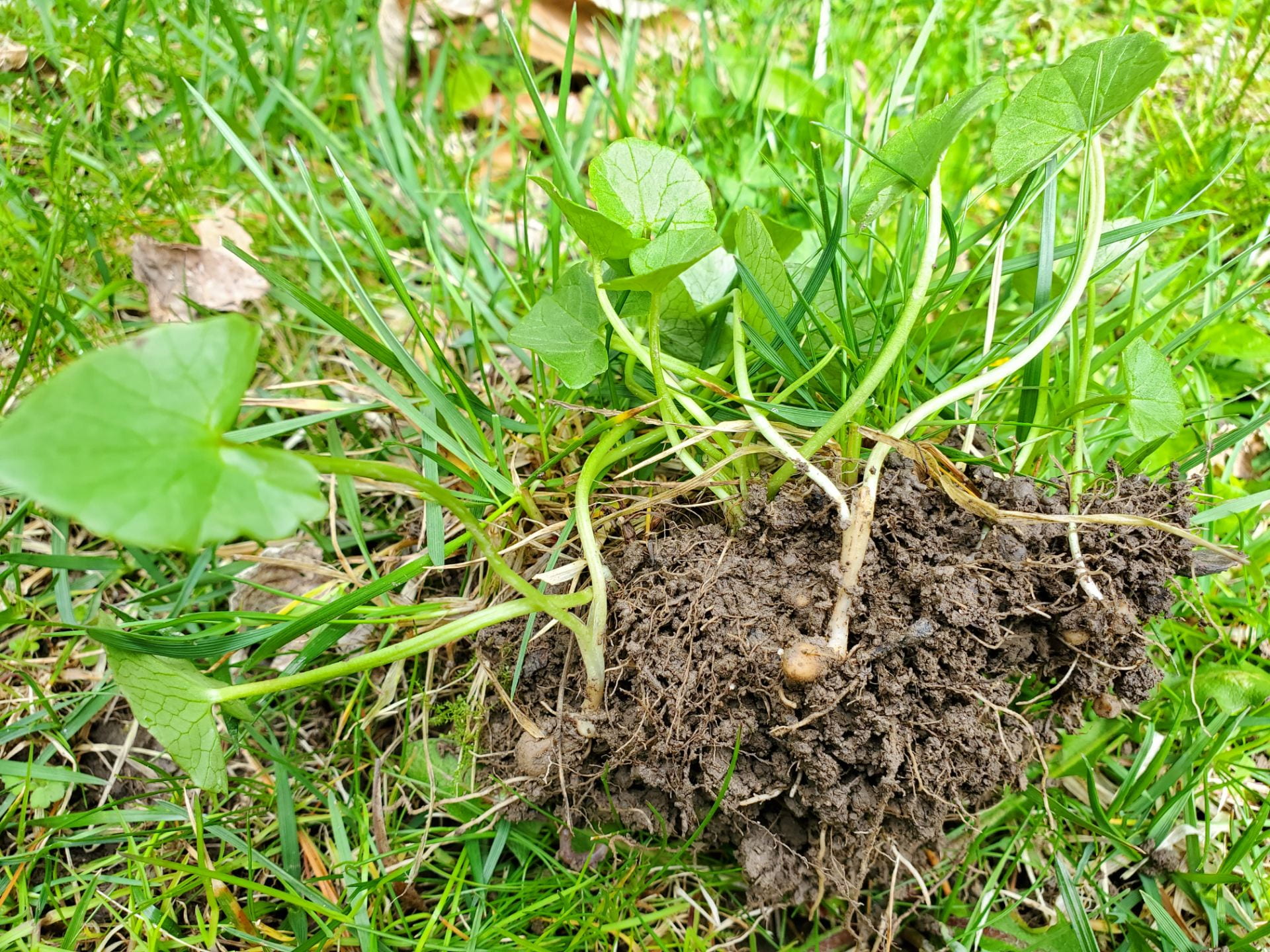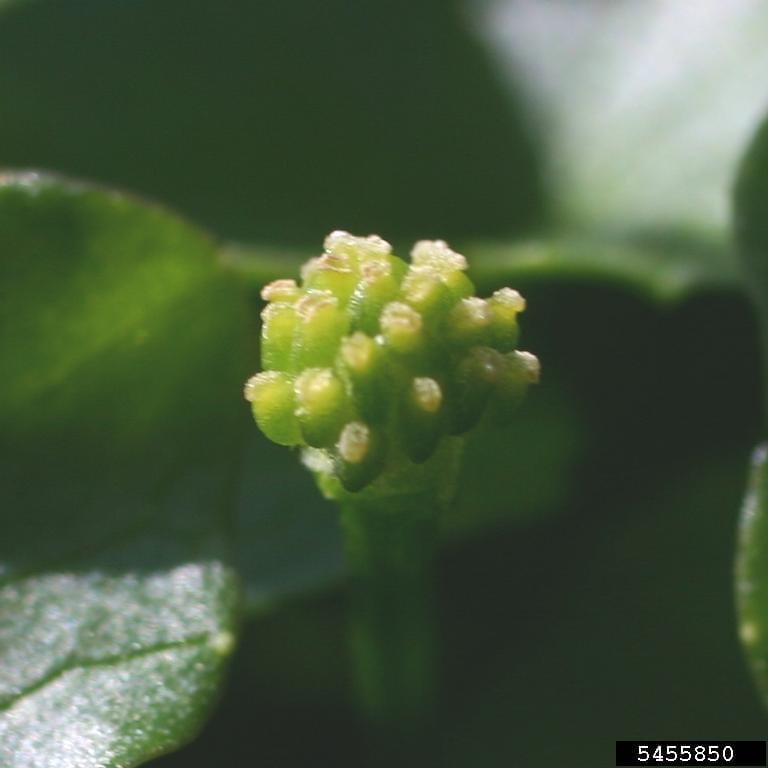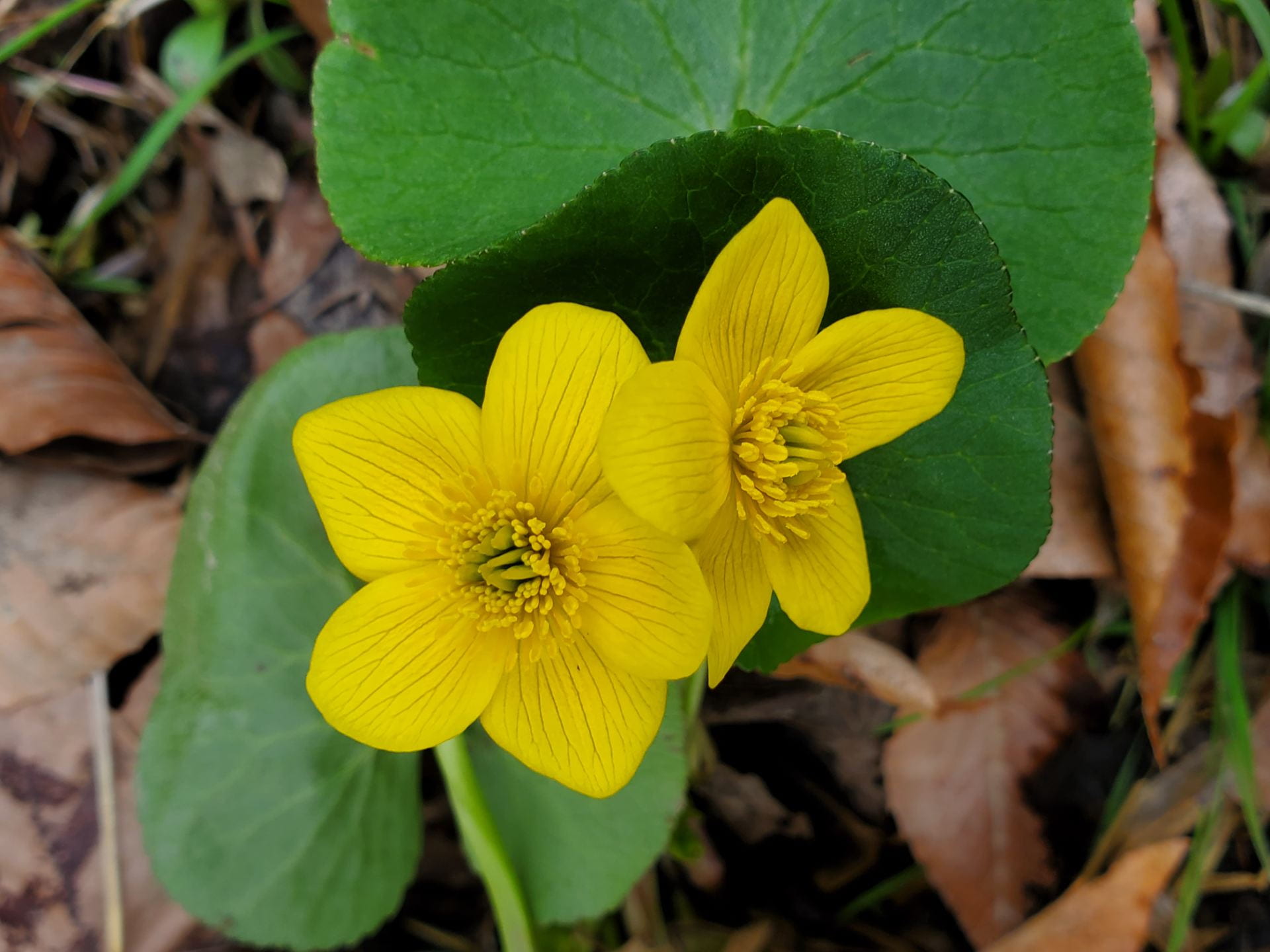We just received a question from Erie County on this frustrating invasive weed. Here in Ithaca this species is in full flower right now (mid-April 2021), and can be seen carpeting the banks of many streams.
Lesser celandine (Ficaria verna, once Ranunculus ficaria), also known as fig buttercup, is a common woodland, garden, and lawn weed that you may see on your farm or property. It is one of the earlier plants to flower in our area, and is an aggressive spreader. It has a perfect storm of flexible reproduction and vegetative spreading mechanisms; it self-pollinates, reproduces by spreading roots, produces underground tubers that create new plants, and also has aboveground ‘bulbils’ that also start new plants. It’s difficult to remove once established.
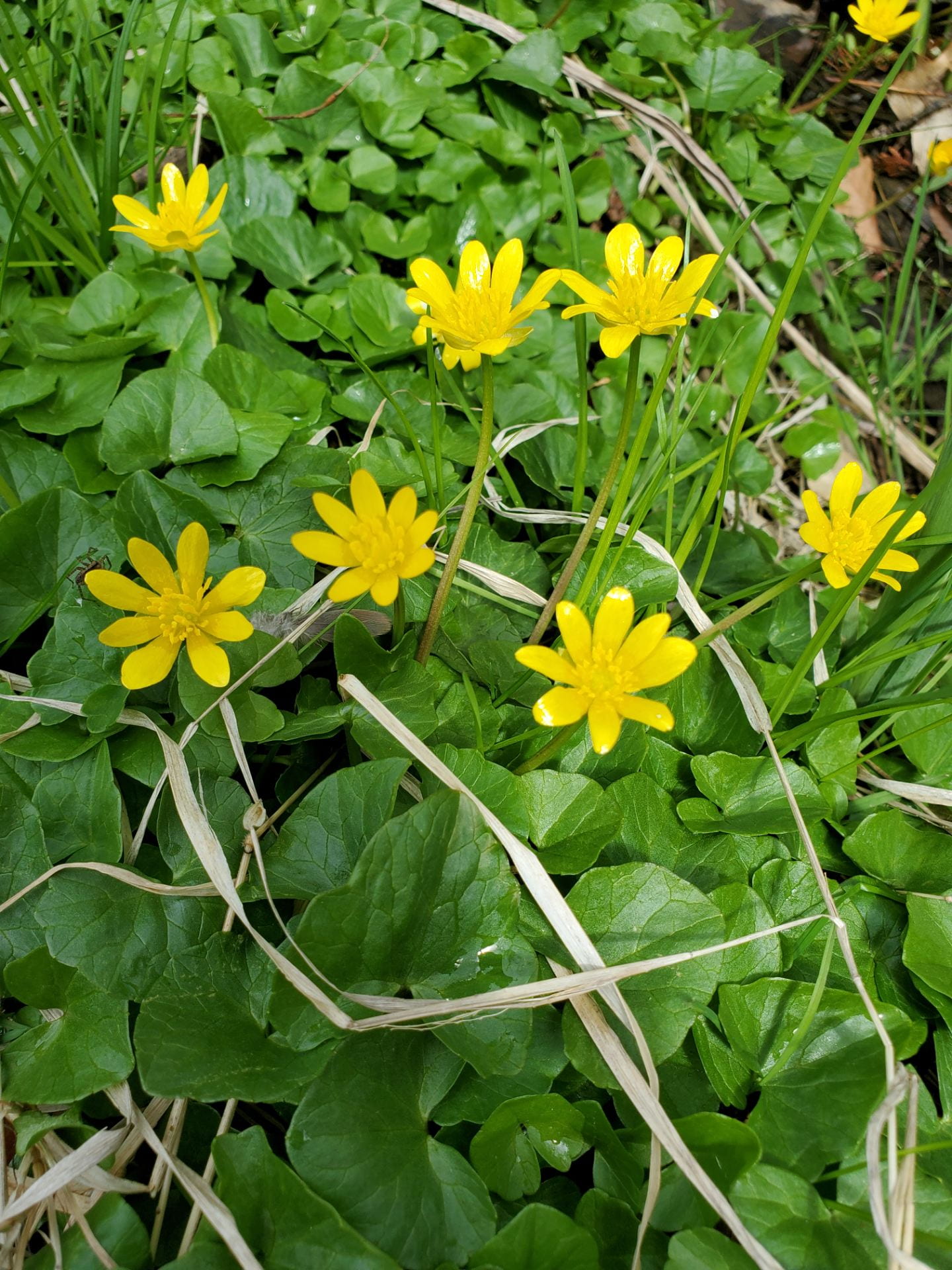
Lesser celandine plant. Photo by Caroline Marschner of Cornell University.
Leaves: Lesser celandine leaves are dark green, glossy, shape variable but largely kidney-shaped, with a reptilian-esque pattern on the underside of the leaf.
Mature Plant: The mature plant is low growing and ephemeral, emerging in the early spring, flowering in April in New York, and senescing by early summer. Roots produce tubers that separate easily from the parent plant to form new infestations. The plant also develops aboveground bulbils, which also produce new plants, and seeds from flowers.
Flowers/fruit: Flowers have three sepals below the flower, which helps identify this versus other buttercup species. Fruits are small and innocuous. Bulbils can be seen on the ground after the plants senesce.

Lesser celandine plant. Photo by Caroline Marschner of Cornell University.
Lesser celandine bulbils. Photo by Lelsie J Mehrhoff of the University of Connecticut, via Bugwood.org,
Management: very small infestations of a few plants can be removed by digging up the plants and carefully removing all plant material including bulbils and tubers. Larger infestations are much more difficult to remove. Most authorities recommend treatment with an herbicide after leaves mature but before flowering begins, in early spring. This method is complicated by the plant’s common location near water; make sure any herbicide used is safe for use near water and allowed in your state.
CCE Oneida county has a good description of the species and management suggestions: https://s3.amazonaws.com/assets.cce.cornell.edu/attachments/23004/Greater-and-Lesser-Celandine-2013.pdf .
Similar Species: Marsh marigold (Caltha palustris)
The New York native plant marsh marigold (Caltha palustris) is another riparian plant with yellow flowers on the same flowering schedule, but it has larger leaves and flowers with five broad petals. Marsh marigold has fibrous roots with no storage structures, and no bulbils forming on the aboveground plant.
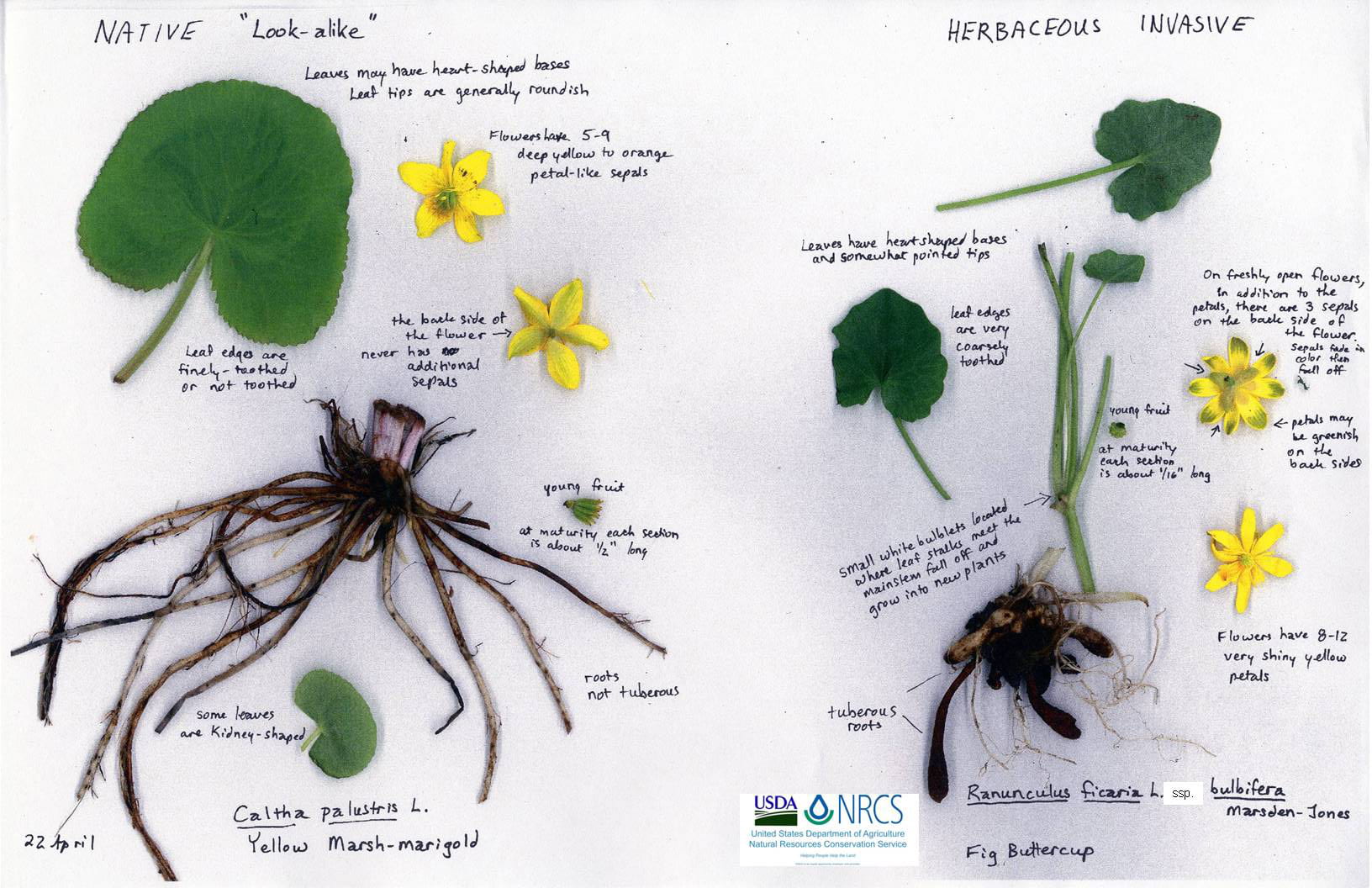
Further Reading
CCE Oneida county has a good description of the species and management suggestions: https://s3.amazonaws.com/assets.cce.cornell.edu/attachments/23004/Greater-and-Lesser-Celandine-2013.pdf .
Ohio State University resource for lesser celandine: https://bygl.osu.edu/node/1016
Lesser celandine management from the state of Washington: https://www.nwcb.wa.gov/images/weeds/Lesser-Celandine-Control_Whatcom.pdf
Lesser celandine management from the Little Falls Watershed Alliance outside of DC: https://www.lfwa.org/updates/tips-controlling-lesser-celandine

